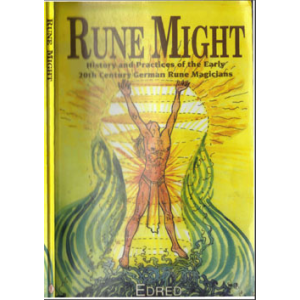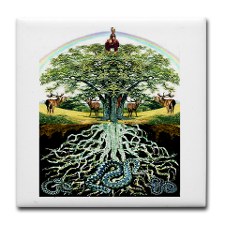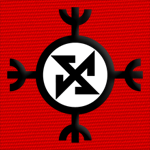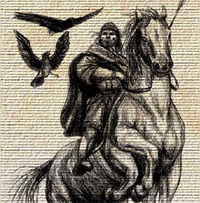
Book: Rune Might History And Practices Of The Early 20th Century German Rune Magicians by Edred Thorsson
This work reveals, for the first time in the English language, the long-hidden secrets of the German Rune Magicians who practiced their arts in the beginning of the 20th century. Most of their work has been unavailable even in German for many decades. This book includes material by Guido von List, Friedrich Bernhard Marby, Siegfried Adolf Kummer, Karl Maria Wiligut, Peryt Shou, Karl Spiesberger and others. This text presents the best and most powerful of the runic techniques developed in the early phase of the runic revival and offers them as a coherent set of exercises. Experience rune-yoga, rune-dance, runic hand gestures (mudras), rune-signing (mantras), group rites with runes, runic healing, and two of the most powerful methods of engaging transpersonal powers~W the ritual of the Ninth Night and the Ritual of the Grail-Cup.Magical practice dealing with runes and the use of runic lore to shape occult teachings has a long history in Germany. For almost as long as there has been a magical revival in that country, there has been a magical runic revival. In the annals of this renaissance, two names shine out above all the rest: Guido von List and Friedrich Bernhard Marby. Others would expand and adapt their ideas, but without doubt all of the significant magical innovations of the occult German runic revival can be traced to one or the other of these two men. But in this work we will be dealing not only with the teachings of these two but also with that of their followers and students, each of whom added something to the hoard of teachings that make up the German occult tradition surrounding the runes.
In the present work I want to explore the practical teachings and workings of the German rune magicians. It will be shown how the German runic tradition fits well with the Western magical tradition, for it is largely an outgrowth of it, although the runic magician would argue that it is the deepest root and basis of the Western revival itself. The second part of this book is a collection of some of the most influential and powerful workings of the German rune-magical tradition. The techniques are drawn from a wide ranger of books, mostly printed in the 1920s, 1930s and 1950s. They represent the teachings of various esoteric individuals and groups working with the runes in Germany during the early part of the 20th century. The reader will be able to enact these runic workings and exercises for purposes of self-development, strengthening the will, and generally improving all phases of magical work. The runes, as taught in the Armanic system, can very easily be put into the working context of any other Western magical tradition, in contrast to the highly traditional forms of runelore expressed in the 24-rune futhark, which is fairly "intolerant" of admixture with other systems. This is simply because the 18-rune futhork as used by the Armanen (followers of Guido von list) and most other German rune magicians of this time is more a part of the so-called Western Tradition than is the 24-rune system. If one is going to work "eclectically" with the runes, it is perhaps best to work with the Armanic runes (the 18-rune futhork).
Free eBooks (Can Be Downloaded):
Ophiel - The Art Practice Of Caballa MagicDavid Oringderff - Spiritual Philosophy And Practice Of Wicca In The Us Military
Diane Purkiss - The Witch In History Early Modern And Twentieth Century Representations
Kveldulf Gundarsson - Teutonic Magic The Magical And Spiritual Practices Of The Germanic Peoples
Edred Thorsson - Rune Might History And Practices Of The Early 20th Century German Rune Magicians P4



